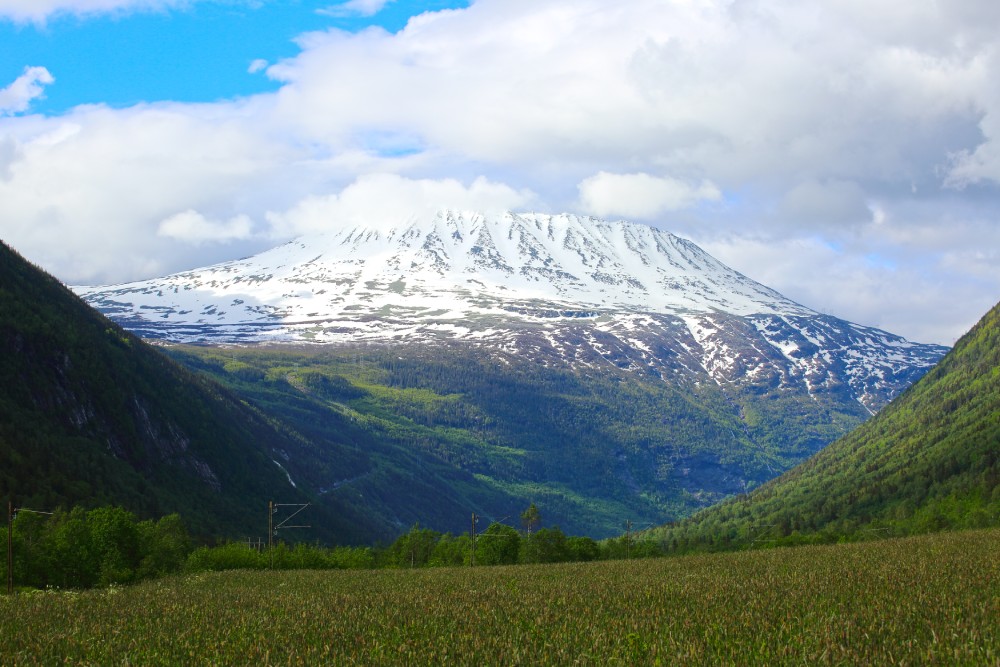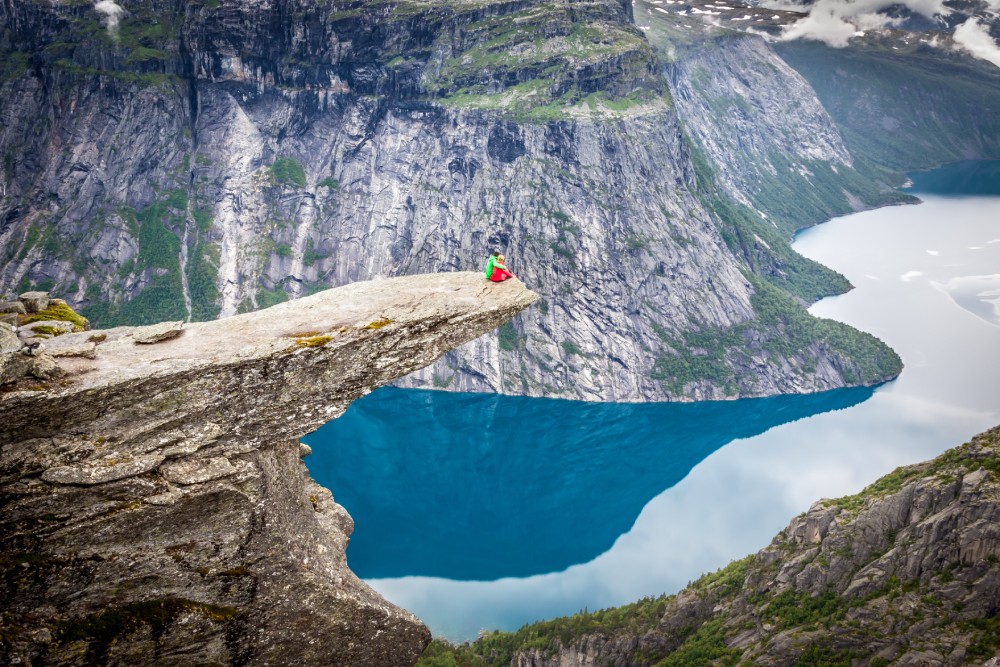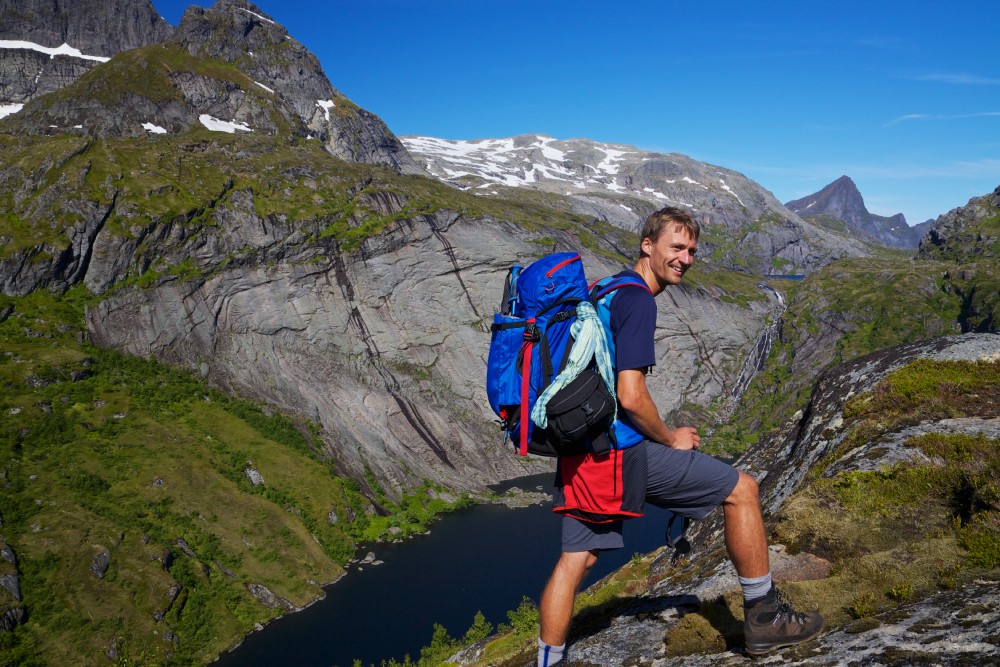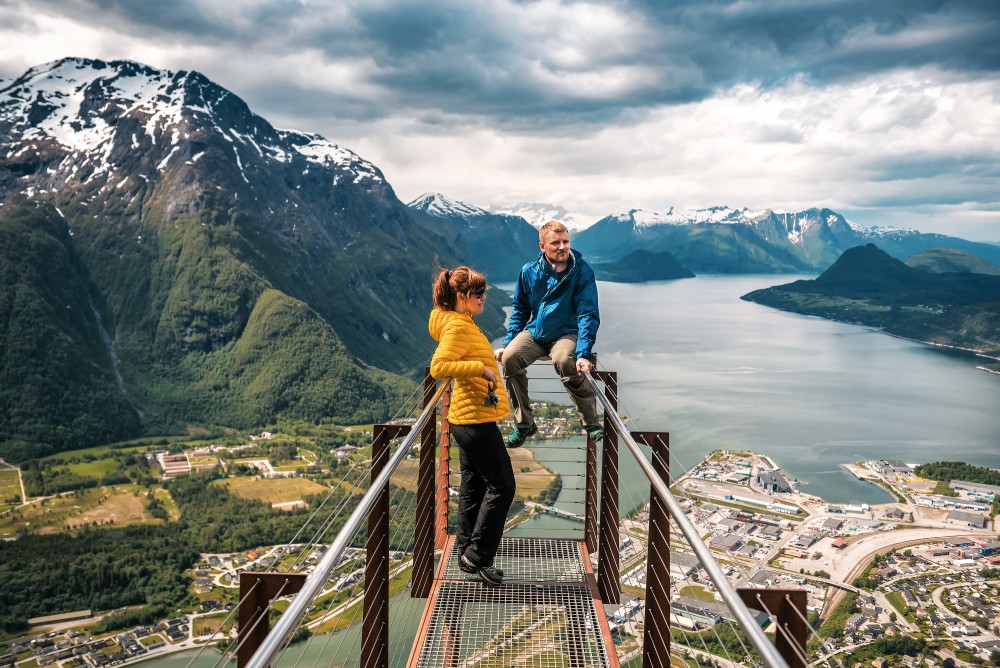Trekking in Norway: Great Routes for Hiking Holidays
Summer is a perfect season for undertaking sports activities, and especially it would be ideal for enjoying the combination of tourism and sport. This type of activity allows you to explore new things, meet new people, and enjoy the scenic views in another country while keeping yourself in a good shape. Trekking in Norway has been gaining in popularity during the last several decades, and many travelers come to this Scandinavian land to explore its authentic nature and inartificial beauty.

Norway is a country that can boast vast mountain ranges, with more than 175 mountains exceeding the height of 2,000 meters! Of course, the Norwegian mountains are not as high as the Swiss, Italian, or French Alps, yet they can decently compete with them in terms of beauty. Norway offers hikers a chance to relish its spectacular landscapes and relax during moments of solitude.
This article appears to be a short guide to trekking in Norway, which provides you with the most famous Norwegian trekking routes and tips for your next adventure. To learn more about hiking in this country, check out our articles about the 10 best hikes and peaks in Norway.
Popular Routes for Trekking in Norway
While there are dozens and dozens of extremely popular trekking routes in Norway — this country is a genuine paradise for hikers; we will mention truly only truly amazing hikes in this part of our article.
Pulpit Rock (Rogaland, 604 meters above sea level). Preikestolen, also known as Pulpit Rock, is one of the most popular light hikes in Norway. During the summer season, the stream of hikers doesn’t stop even at night. Typically, it takes just a couple of hours to reach Preikestolen and return to the starting point. As a reward, you will get fabulous views of Lysefjord and an opportunity to take some cool pictures!
Besides, you can read more about hiking Preikestolen in our article on the best places to visit in Norway during summer.
Gaustatoppen (Telemark, 1,883 meters above sea level). At first sight, it might seem that Nepal has nothing to do with the Norwegian mountains. Yet, Sherpas, the mountain people who live in Nepal, built a stone staircase in the upper part of this mountain, allowing tourists to reach the top. While the hiking time is around 5-6 hours and 8,6 kilometers long, you will be rewarded with a decent prize at the end – a chance to observe 1/6 of Norway’s territory! But even if you don’t wish to hike to the top, you can take a cable car and reach it effortlessly.

Galdhøpiggen (Jotunheimen, 2,469 meters above sea level). Galdhøpiggen is the highest mountain in northern Europe, climbing which is becoming increasingly popular among travelers. Typically, one is able to reach the roof of Norway within 7 or 8 hours on a hike (not including the return time). Make sure you have a guide and the necessary equipment – you will have to climb a glacier and overcome crevasses. That must be done only in pairs, with ropes and ice axes.
Kjeragbolten (Hordaland, over 1,000 meters above sea level). Kjeragbolten is a rock that is clamped between two mountains, overhanging a fjord over 1,000 meters. Typically, it takes around 5 hours to reach the top, but the route is considered strenuous due to a steep rise of more than 600 meters and a couple of challenging sections where one has to use chains for climbing to hold on to them.
Trolltunga (Vestland, 1,100 meters above sea level). Trolltunga, or the “Troll’s Tongue,” is a rock formation that hangs over a fjord and offers fabulous views. However, this hike is indeed strenuous, taking 10 to 12 hours for a return trip. We advise you to prepare well and get git before starting this hike. Besides, you can learn more about preparing for hiking Trolltunga in our blog.

Light Trekking Routes in Norway
Trekking in Norway is an extremely great idea for how to spend the summer season, given the country’s charming and captivating nature. Many wooden cabins and huts are scattered across the country and offer hikers decent accommodation for an affordable fee (affordable in terms of Norway, though). Besides, Norway’s Allemannsretten (“everyman’s right”) law allows travelers to pitch a tent almost anywhere, which removes many logistical headaches for travelers.
In this part of our article, let’s see what hiking routes — many of them are multi-day — are relatively easy and popular among trekkers.
- Hardangervidda. When you think about trekking in Norway, one of the first places you may think about is Hardangervidda. You won’t find the tallest mountains here, but the vast territory of this plateau and rich wildlife offer great opportunities for trekking. The trails on Hardangervidda at times seem endless, while a couple of dozens of public huts offer hikers a decent refuge. Moreover, this is an area where you can try Norway’s longest and one of the most impressive treks.
You can find out more about hiking in Hardangervidda in our article about Norway’s best national parks.
Time: from 7 to 12 days.
Location: the south of Norway.
- Dovrefjell. Apart from a variety of well-trotted trails and authentic Norwegian nature with countless waterfalls, Dovrefjell also offers something that you can hardly find elsewhere in Norway. This national park gives you a perfect chance to witness musk oxen in their natural habitat. Once you face a herd of musk oxen, make sure to keep a safe distance between yourself and these incredibly fast and easily irritable beasts.
Time: from 2 hours to 2 days.
Location: the center of Norway.

- Norangsdal Valley. Located in the Sunnmøre Alps, this valley is typically referred to as the wildest area in Norway. For centuries, people could pass the valley only by foot or horseback, yet now it’s possible to have a ride on a small road that pierces the ravine. Even though even setting out on a road trip across this valley can be a fabulous experience, embarking on a trek here guarantees you an enormous palette of emotions. Fit hikers typically pass the valley in a single day, but ordinary tourists will likely need more time. If that’s the case for you, you might find refuge at Patchellhytta and stay there for a night.
Time: more than 1 day.
Location: Sunnmøre Alps.
- Knivskjellodden. This secluded place in the country’s north offers fantastic opportunities for trekking in Norway. While hundreds of thousands of tourists visit North Cape every year, only the savviest travelers get to know about this place and venture into hiking here. If you really wish to experience something unusual, not popular among the wider public yet, then you should definitely try trekking to Knivskjellodden.
Time: from 1 to 2 days.
Location: the north of Norway.
- Horseid and Bunes Beach. Reach these postcard-like beaches by taking a ferry from Reine, Lofoten’s most popular destination. Located just some 100 kilometers away from the Arctic Circle, these beaches provide you with an opportunity to enjoy naturally azure waters and white sand, making you believe that you are as close to the equator as you may possibly be. Granite peaks, scattered across the trek trail, are also out-of-outer and ensure that you can relish in inexpressible, mountainous sceneries.
Though, we should point out that the Lofoten Islands offer endless opportunities for hiking. Learn more about this destination in our article about the Lofoten Archipelago.
Time: from 5 to 7 hours.
Location: Lofoten Islands.

Tips for Trekking in Norway
If you have made up your mind about trekking in Norway and would like to try a trek or two, here are a couple of tips that may well help you:
- Norway has hundreds and hundreds of trekking routes, which you can recognize by looking for the red “T” letter painted on stone pyramids, trees, or rocks.
- Remember that the weather may be quite cold during your trekking in Norway, so you shouldn’t forget to bring rain gear and warm clothes along.
- Many hiking cabins in Norway are available for trekkers, and travelers can rest and relax there for a relatively small fee.
- Norway is the land of Vikings, so the country’s laws are accordant. You can pitch a tent almost anywhere, so you can take advantage of that rule.
- Always bring a map with your hiking routes marked on it, and remember that the vast territory of the country’s wilderness sometimes may not have a phone connection (also, don’t forget about battery and charging problems).
- You can use this map for planning your trekking in Norway.
- You expect that the weather in Norway can quickly change and turn nasty in a matter of hours. So, make sure to have a reliable forecast before starting your hike.
- Always have enough food (a bit more than you actually need), as things may turn out to be different than you expected.

Share this post:

